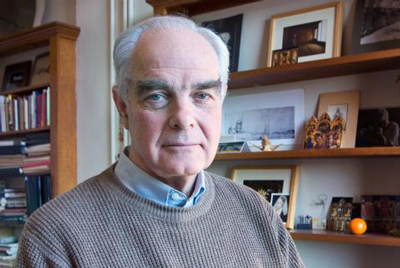November 24, 2014
By Madeline Ruoff ’18

Art Professor Joel Upton
Among the hundreds of unusual offerings that fill the Amherst course catalog — classes that focus on food, on monsters, on murder — Professor of Art and the History of Art Joel Upton’s seminar “The Art of Beholding” stands out. In this class, students are not swamped in readings or essays or problem sets; in fact, the course syllabus is not even a full page.
Rather, each member of Upton’s class picks just one painting to focus on for an entire semester. Students complete five initial steps, in which they learn everything they can about the painting, that bring them towards the end goal of “beholding.”
The goal of beholding through art is to “address a fundamental crisis in the condition of our lives: namely, estrangement from ourselves, from each other, and from the world in which we live,” says Upton. “The art of beholding becomes synonymous with love …. it can be applied to all areas of life.”
Upton has taught the course for over a decade, and he observes that students become more and more “vivid” as the semester goes on. “You behold, and suddenly you’re in touch with that thing that places you in relation with everything else.”
Will Kamin ’15, a former student of Upton’s, says “the class makes a powerful statement against today’s predominant culture of scurrying around museum galleries, from painting to famous painting, expecting some grand epiphany to present itself in each piece on the wall, but never taking the time to patiently, meaningfully engage with any given work.”
“The Art of Beholding” is not a class about art but rather a way of understanding, says Upton. Students develop a “deep relationship with a painting” just as they would another human. At the beginning of each presentation, Upton puts up a picture of the painting for three minutes, which, he says, “has a very large impact. The painting increases its presence in your quiet contemplation.” He recommends doing the same with friends and loved ones to “see what each person brings to the relationship.” He references a line from Wallace Steven’s poem “Final Soliloquy of the Interior Paramour,”saying that when one truly loves, truly beholds another person, “being there together is enough.”
“[Upton’s] class teaches that the highest form of encounter with anything beautiful can only come as the result of slow, diligent, respectful engagement with that thing or being on its — or his, or her — own terms,” says Kamin. “Once you've come to that realization, Professor Upton would ask, how could you ever want to harm anything under the sun? The answer, I think, is that you couldn’t.“